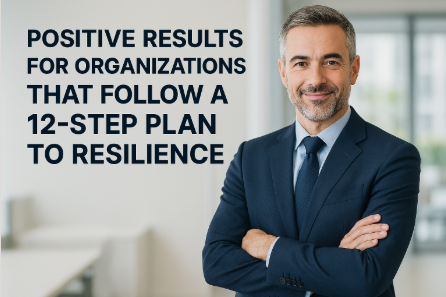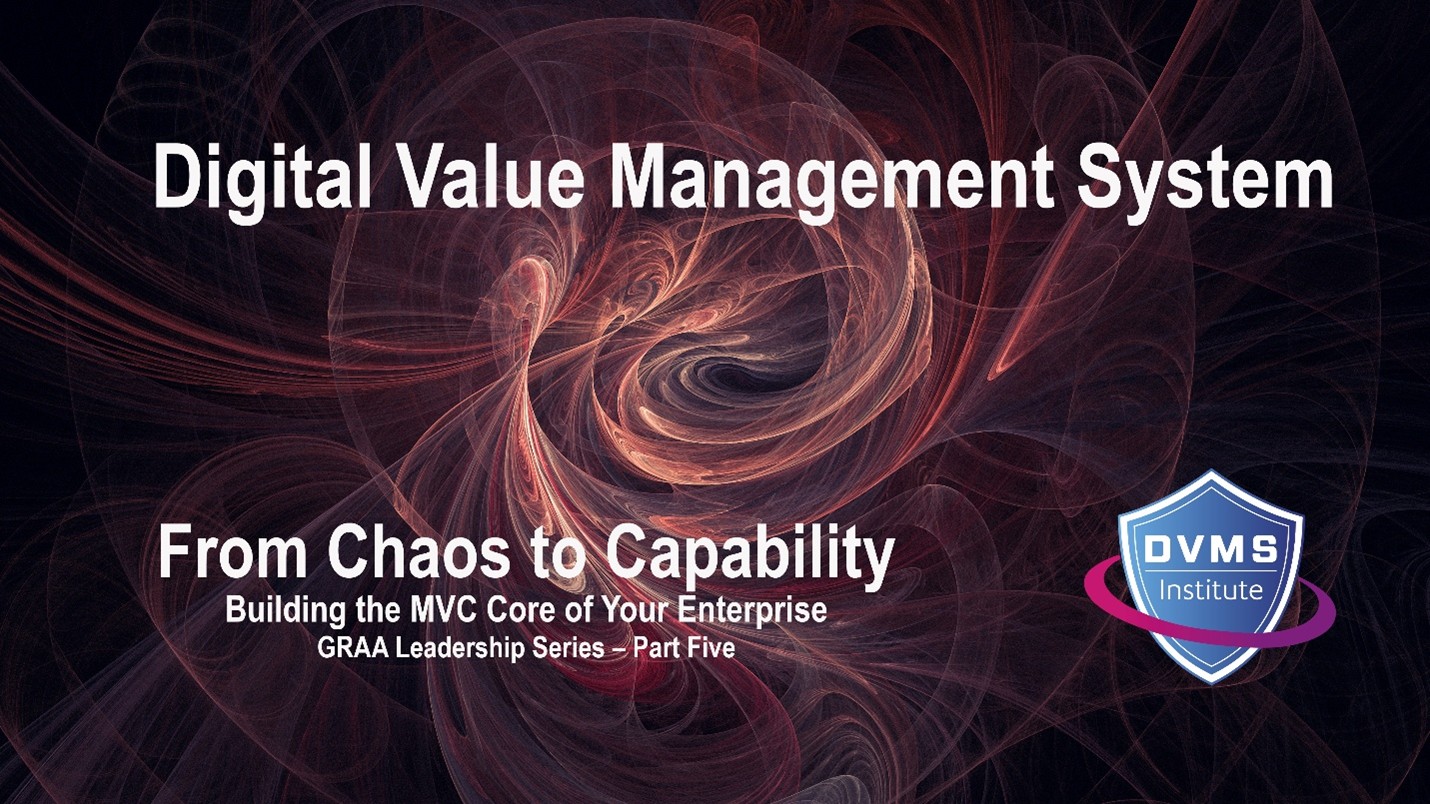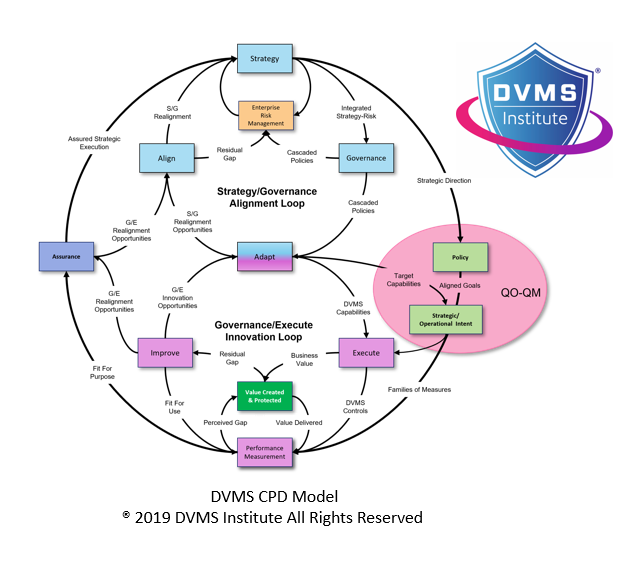Aligning the Digital Value Management System with a 12-Step Recovery Journey
Rick Lemieux – Co-Founder and Chief Product Officer of the DVMS Institute
Introduction: Two Journeys of Transformation
Addiction recovery programs and organizational resilience models might seem to operate differently. One addresses personal healing from destructive patterns, while the other supports enterprises navigating digital chaos. Yet, striking parallels emerge when we examine the principles of the 12-Step Recovery Program alongside the Digital Value Management System® (DVMS). Both emphasize humility, accountability, continuous reflection, and a commitment to adaptive growth. Just as individuals in recovery learn to manage life differently, organizations using the DVMS learn to see and think differently about risk, resilience, and value.
Step 1: Admitting Powerlessness – Recognizing Complexity
The first step in recovery is admitting powerlessness over addiction. Similarly, in DVMS practice, organizations must acknowledge the overwhelming complexity of digital risk. Leaders cannot control the external threat landscape any more than an individual can control addiction’s grip. Instead, they must accept the volatile, uncertain, complex, and ambiguous (VUCA) environment as reality. This humility becomes the foundation for transformation.
Step 2: Believing in a Greater Power – Trusting the Overlay
Recovery calls for faith in a power greater than oneself. For organizations, this is not spirituality but trust in the DVMS overlay, a system that transcends individual departments or frameworks. The overlay provides a higher-order structure—a unifying approach that integrates governance, assurance, planning, design, change, execution, and innovation. By believing in the DVMS as a guide, organizations find strength beyond siloed or ad hoc approaches.
Step 3: Surrendering to Guidance – Strategy-Risk as a Compass
Step three asks individuals to turn their will over to recovery guidance. In DVMS, this is akin to surrendering the illusion of separate “strategy” and “risk” and embracing strategy-risk as one entity. Just as recovery requires trust in a structured path, resilience demands aligning every decision with the reality that value creation and protection cannot be separated.
Step 4: Making a Moral Inventory – The Organizational Profile
In recovery, step four requires a fearless moral inventory. This parallels organizations’ CSF Organizational Profile process—documenting the current state honestly, identifying strengths and weaknesses, and confronting systemic blind spots. Without a transparent inventory, organizations remain in denial, unable to see the gaps between their current posture and desired resilience.
Step 5: Admitting Faults – Transparency and Culture
Recovery emphasizes admitting wrongs to oneself and others. In DVMS, this step emerges in the culture of transparency and accountability. Leaders must acknowledge when policies, processes, or cultural norms have failed. Sharing this candidly with stakeholders builds trust and sets the stage for collective healing. Like confession in recovery, organizational honesty breaks the cycle of denial.
Step 6: Readiness for Change – Embracing Transformation
Step six focuses on readiness to have shortcomings removed. For organizations, this translates to embracing Change as a core capability of the DVMS MVC-Z-X Model. Change is not an event but a discipline, enabling adaptation to new risks, markets, and threats. As recovery involves openness to transformation, organizations must cultivate readiness for continual structural and cultural adjustments.
Step 7: Humbly Seeking Improvement – Governance and Assurance
Recovery’s seventh step is humility in asking for help. Within DVMS, humility manifests as strengthening Governance and Assurance practices. Governance sets the rules, and assurance validates whether the organization lives by them. Both require leaders to admit they cannot assume compliance or resilience without verification. This humility fosters vigilance and trust.
Step 8: Making a List of Harm – Identifying Impacted Stakeholders
Step eight requires identifying those harmed by addiction. In DVMS, this parallels stakeholder impact assessments within the CPD Model. Organizations must acknowledge where their digital practices—or failures—have harmed customers, employees, partners, or society. Recognizing these consequences helps them prioritize protections for what stakeholders truly value.
Step 9: Making Amends – Recover and Innovate
Recovery emphasizes making direct amends. For organizations, this occurs in recovery planning and innovation. After breaches or failures, recovery restores operations, while innovation seeks to prevent future harm. Like personal amends, organizational amends require tangible improvements—new safeguards, resilient designs, and more ethical practices- not just an apology.
Step 10: Continuous Inventory – Assurance and Feedback Loops
Step ten in recovery is taking regular personal inventory. DVMS institutionalizes this through continuous assurance and adaptive learning cycles. Organizations must regularly evaluate systems, measure effectiveness, and learn from small failures. The “FastTrack” phases of DVMS (Initiate, Basic Hygiene, Expand, Innovate) mirror recovery’s daily disciplines, ensuring sustained progress.
Step 11: Seeking Awareness – Systems Thinking and Reflection
In recovery, individuals seek spiritual awareness through prayer or meditation. In DVMS, awareness comes from systems thinking and reflective questioning. Leaders must pause to see the whole, not just isolated silos, asking more profound questions about interdependencies, unintended consequences, and emerging risks. This reflective stance allows the organization to act wisely rather than reactively.
Step 12: Carrying the Message – Building a Resilient Culture
The final recovery step is helping others. This means embedding resilience into organizational culture and leadership cascades, so every employee becomes part of the mission. Carrying the message means mentoring partners, engaging communities, and modeling resilience across ecosystems. Organizations that thrive on the edge of chaos protect themselves and inspire others to adapt responsibly.
Conclusion: Two Paths, One Pattern of Renewal
The comparison between DVMS and the 12-step program reveals a shared human pattern: renewal requires honesty, humility, accountability, and a shift in mindset. Just as recovery transforms brokenness into growth, DVMS transforms digital vulnerability into resilience. Both paths reject denial, embrace accountability systems, and empower individuals or organizations to thrive in chaotic environments. By aligning these journeys, personal or organizational resilience is less about eliminating risk and more about learning to live, adapt, and grow through it.
About the Author

Rick Lemieux
Co-Founder and Chief Product Officer of the DVMS Institute
Rick has 40+ years of passion and experience creating solutions to give organizations a competitive edge in their service markets. In 2015, Rick was identified as one of the top five IT Entrepreneurs in the State of Rhode Island by the TECH 10 awards for developing innovative training and mentoring solutions for boards, senior executives, and operational stakeholders.
In today’s digitally driven economy, cyber disruptions are no longer an “if” but a “when.”
The DVMS Institute’s Certified Training Programs teach organizations how to transform static, fragmented, and control-based (NIST, ISO, ITSM, GRC, etc.) Governance, Risk, and Compliance (GRC) programs into a GRC Digital Value Management System® (DVMS).
Through its MVC, CPD, and 3D Knowledge Models, the DVMS transforms existing GRC programs into an integrated, adaptive, and culture-powered overlay system that drives Operational Resilience, Digital Trust, and Regulatory Compliance across complex digital supply chains.

Enabling enhanced GRC demands more than static frameworks—it requires the seamless connection of organizational Strategy, Governance, and Operations, supported by a forward-looking culture dedicated to anticipating and mitigating the systemic risks that threaten daily digital business operations.
By adopting this forward-looking approach to GRC, businesses are positioned to:
- Maintain Operational Stability Amidst Constant Digital Disruption
- Deliver Digital Value, and Trust Across A Digital Ecosystem
- Satisfy Critical Regulatory and Certification Requirements
- Leverage Cyber Resilience as a Competitive Advantage
DVMS Explainer Videos
- Architecture Video: David Moskowitz explains the DVMS System
- Case Study Video: Dr. Joseph Baugh Shares His DVMS Story.
- Overlay Model – What is an Overlay Model
- MVC ZX Model – The MVC’s that power operational resilience
- CPD Model – Adaptable governance and assurance
- 3D Knowledge Model – Enabling holistic organizational learning
- FastTrack Model – A phased approach to cyber resilience
Digital Value Management System® is a registered trademark of the DVMS Institute LLC.
® DVMS Institute 2025 All Rights Reserved




